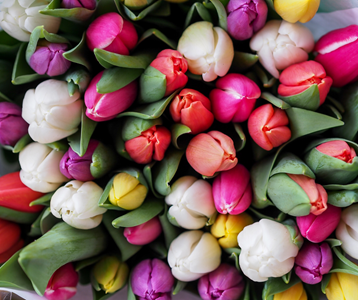The company HM van Haaster is an innovative flower bulb company and is active in every part of the flower bulb supply chain. From breeding new varieties to the development of an end product for the consumer, with the fourth generation of young entrepreneurs, we are looking at a different way of doing business. Sustainable and circular.
During the cultivation and processing of the flower bulbs, residual flows are released and HM van Haaster has, partly with the support of BioBoost, investigated whether it is possible to value these residual flows. A cosmetics company has expressed an interest in using the residual flows of our tulips in a new cosmetic product line to be developed if we can demonstrate that tulips contain interesting active substances.
In collaboration with Holland Biodiversity, HM van Haaster has investigated whether an extract can be developed from the residual flows of tulips. which can be used as an active ingredient in cosmetics products. It is important that the tulip contains substances that already have a proven effect and are used in cosmetic products.
In this study, a literature study was started to find out which active ingredients are used in the cosmetic industry. Subsequently, a literature search and NMR analysis method were used to determine whether certain active substances are also present in tulips. A total of 100 tulip extracts were analyzed and both active and toxic substances were found in various plant parts of tulips (bulb, leaf, flower).
All results have shown that flower heads of a particular tulip variety meet the criteria set by the cosmetics company (active ingredients, low toxicity, sustainably grown, use of residual flows). Using GC-MS and HPLC analysis methods, a raw tulip extract is developed from flowers in which the active substances are present.
The cosmetics company is currently testing the extract in a formulation for the development of a final product. The goal is for the end product to be in stores by 2021.
